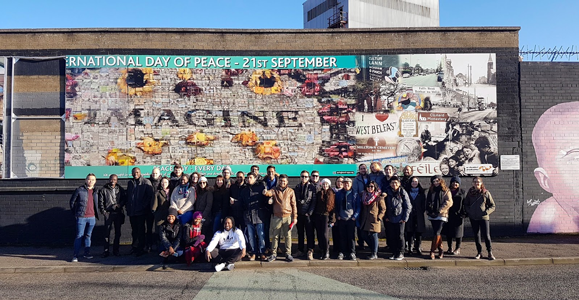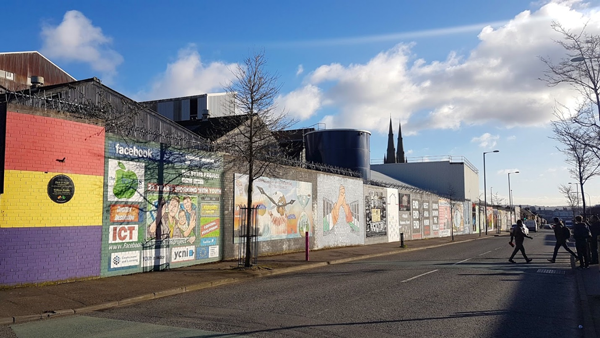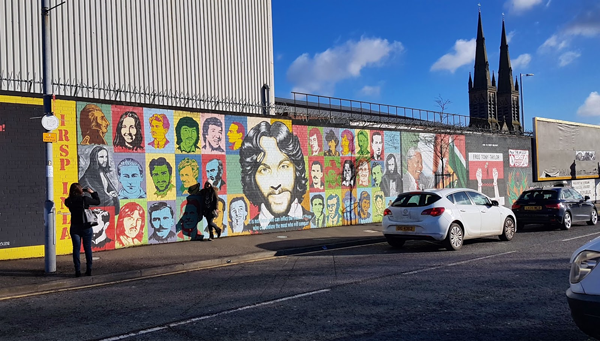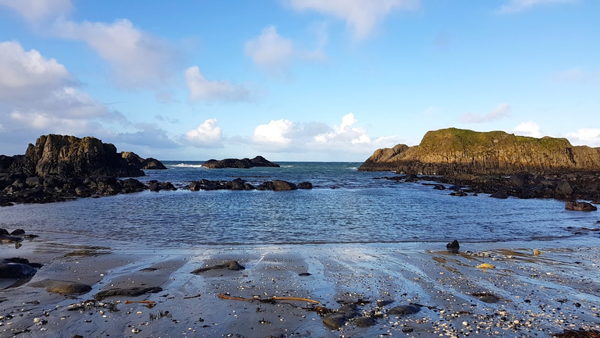
The capital of Northern Ireland
The capital of Northern Ireland was once the biggest producer of linen in the world, and the home of skilled shipbuilders who designed and constructed the largest and most luxurious liner of that time, the Titanic. Belfast is a city full of history, and this past Friday we got to revisit the most turbulent period of its past – the Troubles.
During the 1970s and 80s, Belfast was routinely listed among the most dangerous cities of the world. It was a period of intense and violent conflicts between its two divided communities – Protestant/Unionist and Catholic/Republican. Traces of conflict can be seen in murals found all over the town, but especially along the peace walls. These are 25-foot high protective barriers that spread out over 21 miles and that, to this day, separate the two communities.

Courtesy of Chevening, about 40 scholars had the opportunity to visit the murals and see the messages shared within communities but also those sent by people from all over the world, capturing their wishes and hopes for peace. Our tour guide talked us through the streets of Belfast and we made several stops to see the key art pieces, some of which you can see here.
After the tour, we made our way to Queen’s University Belfast for a couple of sessions that bestowed us with a slightly different perspective on the murals and the stories behind them.

First, we had the opportunity of hearing David Boyd, the Director of Beat Carnival, an organisation that aims to bring together divided communities of Belfast by celebrating positive and unifying images. One of their projects is an annual carnival, held on one of the most conflict-stained roads in Belfast, that manages to engage people from both communities.
David said: ‘By talking to some people on the Shankill Road we got an impression that they don’t realise that parades or celebrations can be held for anything else but the past. We are trying to invite people to dance, have fun, and celebrate – together.’
The talk that followed was held by Dr Pedro Rebelo, a composer, sound artist, and performer who is researching the role of sound and music in conflict transformation in Mozambique. His was a story of persistence, perseverance, and empowerment through art. Art has traditionally communicated division in Belfast, but these two lecturers showed us how it can also be used to enable a creation of a shared sense of identity.

Over the last few decades, Belfast has been working hard to reshape its image. If it were not for the numerous tours that take you to see the murals and guide you through its political past and present, and the big and heavy walls spanning the city, it’s very hard to notice any signs of tension as a tourist. Every step of your journey you encounter incredibly nice and kind people who do their best to make your visit enjoyable.

So today, when you mention Belfast and the surrounding area, aside from the history of conflict, the images that come to mind are ones of the Game of Thrones filming locations, Giant’s Causeway, and one of the most beautiful coastal roads that you just have to visit. And so my wishes join those found on the peace walls, hoping that the next time I visit Belfast, it will be a city where art and industry flourish and stories of segregation are just a thing of the past.


